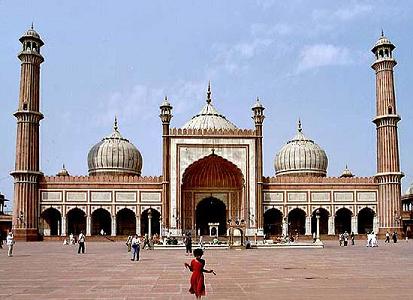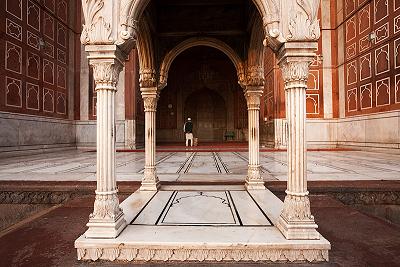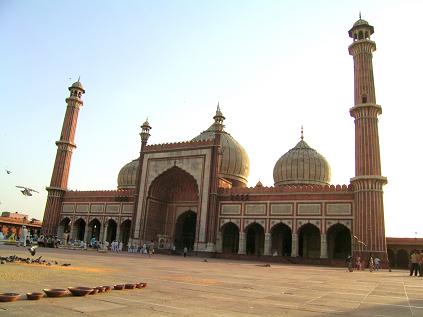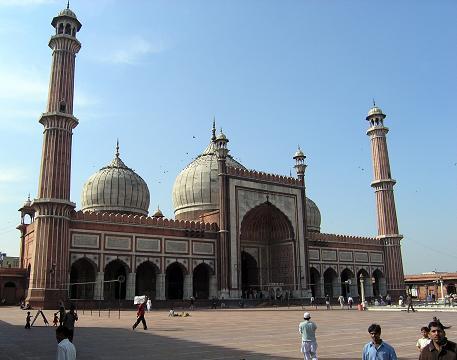|
 |
|
Welcome |
|
Rajasthan
Tours |
|
|
|
|
|
|
|
|
|
|
|
|
|
|
|
|
|
|
Introduction of Jama Masjid |
|
Jama
Masjid is the biggest mosque in India, it is situated across the road
from the Red Fort. This mosque is located in the centre of the old
city on the top of a large hill.
This mosque was founded by the Mughal emperor Shah Jahan between 1644
and 1658.
The
mosque stands on Bho Jhala, which is one of the old Mughal capital
cities of Shahjahanbad. Jama Masjid is very beautiful architecturally, it
is also a site of religious significance as it houses a hair from the
beard of the Prophet, as well as a chapter of the Holy Quran written
by him.
This
mosque is built in yellow sandstone and is a merger of Hindu and
Muslim styles of architecture. The
mosque was constructed by more than 5000 artisans, with red sandstone
and marble. This mosque stands on 260 pillars supporting 15 domes at
varying elevations.
|

Jama Masjid Front |
|
The
courtyard of the mosque is about 408 square feet and is paved with red
stone that can hold a large number of people. At the centre of
the mosque there is a large marble tank in which the devout wash their
hands before attending prayers. The main mosque is circled by
three onion-shaped domes made of white marble and inlaid with stripes
of black slates. The shape of the courtyard is rectangular which is
about 65 by 76 metres. The central courtyard is reachable from the
East, though there are three ways on the other side also. The Entrance
at the eastern side leads to another area which has the tomb of Sultan
Ahmed Shah. Jama Masjid faces the Red Fort, three gateways, four
towers and two minarets on the east. On the north and south of the
complex are the two 130 feet high minarets from where an amazing
birdís eye view of the city can be seen. The main gate of the Masjid, the
eastern entrance, is usually closed on most of the days of the week.
It was perhaps used by the Emperors.
|
|
Tombs |
|
Near the
Eastern entrance stands the tomb of the Sultan Ahmed Shah, which was
homage to the Sultan by his son Mohammed Shah II. The tomb houses the
graves of three great rulers of Gujarat - Ahmed Shah I, his son,
Mohammed Shah and his grandson, Qutub-Ud-Din Ahmed Shah II. After 100
years, a nobleman, Farhatul Maluk repaired the tomb, who also got the
walls of the mosque engraved.
Today after centuries of heat and uneven weather, Jama Masjid stands
unchallenged serving as a prayer place for various Muslims. |
|
|
 |
 |
|
Jama Masjid
Inside View |
Jama Masjid
Outside View |
 |
 |
|
Jama
Masjid
Outside
View |
Jama
Masjid
Outside
View |
|
|
|
|
|
|
|
|
|
|